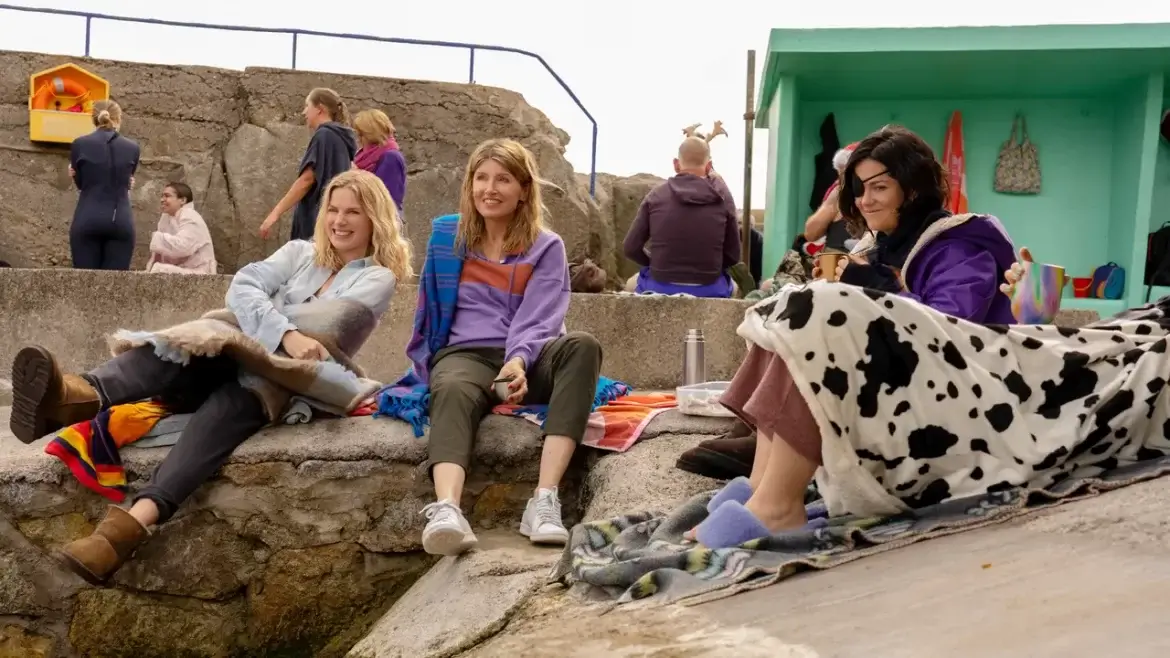On Christmas morning, while most people around the world are unwrapping presents in their warm homes, thousands of Irish people engage in a decidedly more bracing tradition: the Christmas swim. From Dublin’s famous Forty Foot to countless beaches, coves, and piers around the country, brave souls gather to plunge into the frigid waters of the Irish coast, carrying on a tradition that spans generations.
The Origins of Christmas Swimming
The practice of winter swimming in Ireland dates back to the Victorian era when sea bathing became popular for its purported health benefits. The Forty Foot in Sandycove, Dublin, originally a gentlemen’s swimming club, became particularly associated with this tradition. While year-round swimming was common among a dedicated few, the Christmas morning swim gradually evolved into a communal event that captured the public imagination.
The Forty Foot: A Dublin Institution
No discussion of Christmas swimming in Ireland can ignore the Forty Foot. This deep-water cove, immortalized in James Joyce’s “Ulysses,” has been the site of Christmas morning swims for over 250 years. Originally a men-only bathing spot, it was famously the subject of protests in the 1970s before finally being opened to women and children, making it the truly communal gathering place it is today.
During the Victorian era, the Forty Foot was known for its “hardy annual” swimmers who would brave the waters every day of the year. These dedicated individuals helped establish the Christmas swim as a tradition, with local newspapers from the late 1800s reporting on the Christmas Day gatherings at the spot.
Nationwide Traditions
While the Forty Foot might be the most famous location, Christmas swimming happens all around Ireland’s coastline:
Galway
Salthill’s Blackrock diving tower draws hundreds of swimmers each Christmas morning, with many raising money for local charities. The tradition here has grown significantly since the 1970s, becoming a major community event.
Kerry
Fenit Beach sees whole families participate in the Christmas swim, often followed by hot whiskeys at local pubs. The stunning backdrop of the Dingle Peninsula makes this one of Ireland’s most picturesque Christmas swimming locations.
Cork
Myrtleville Beach hosts one of Munster’s largest Christmas swims, with participants often arriving in festive costumes before taking the plunge.
The Charitable Connection
Since the mid-20th century, Christmas swims have become increasingly linked with charitable causes. Many locations now organize their swims as fundraising events, adding a meaningful dimension to the tradition. This aspect has helped the custom grow and attract new participants who might otherwise have stayed warm and dry.
Preparing for the Plunge
Veterans of the Christmas swim have developed their own rituals and preparations:
- Many arrive early to secure parking and meet friends
- Hot drinks in flasks are essential post-swim equipment
- Some wear festive costumes or Santa hats for the occasion
- Experienced swimmers advise newcomers to wear swimming shoes to protect against cold stones
- Most participants bring warm, loose clothing for after the swim
The Social Aspect
Perhaps the most important element of the Christmas swim is its social nature. Friends and families gather, strangers chat and encourage each other, and there’s a palpable sense of shared achievement once everyone is back on dry land. Many participants speak of the swim as a way to clear their heads before the indulgences of Christmas Day.
Modern Evolution
Today’s Christmas swims have evolved with the times. Many locations now have improved facilities, safety measures, and organized events. The rise of social media has helped spread the tradition, with photos and videos of Christmas swimmers sharing their experience becoming a standard part of Irish Christmas Day celebrations online.
Health Benefits and Precautions
While winter swimming has documented health benefits, including improved circulation and mental health advantages, medical professionals advise certain precautions:
- Never swim alone
- Limit time in the water
- Warm up gradually afterward
- Avoid alcohol before swimming
- Listen to your body and don’t stay in too long
A Growing Tradition
In recent years, the tradition has seen a surge in popularity, particularly among younger participants. The rise of year-round sea swimming during the COVID-19 pandemic has introduced many new people to the practice, with many choosing to make the Christmas swim their first winter bathing experience.
Looking to the Future
As climate change affects sea temperatures and weather patterns, some worry about the future of this tradition. However, the social and charitable aspects of Christmas swimming seem likely to ensure its continuation, regardless of changing conditions.
Conclusion
The Christmas swim represents something uniquely Irish – a combination of community spirit, charitable giving, and a certain madcap bravery in the face of freezing temperatures. Whether at the historic Forty Foot or a small local beach, participants are part of a tradition that connects them to generations of previous swimmers and their communities.
As one regular Forty Foot swimmer puts it: “It’s not really Christmas until you’ve had that first shock of cold water. After that, everything else about the day feels like a warm bonus.”
For those considering joining this festive tradition, remember: the hardest part is getting in, but the feeling of accomplishment (and the hot whiskey afterward) makes it all worthwhile.


